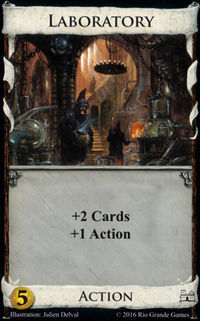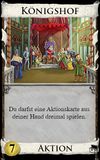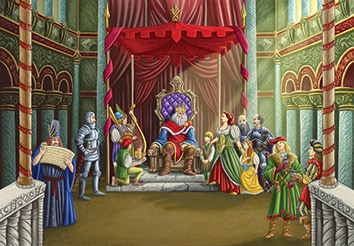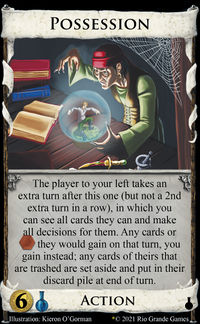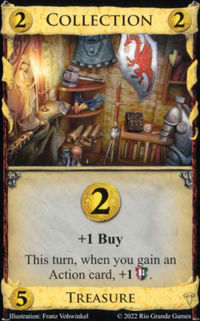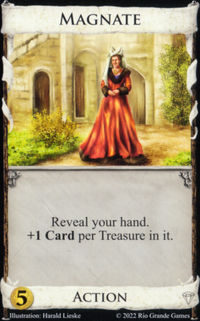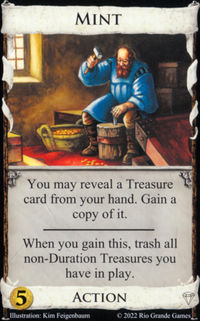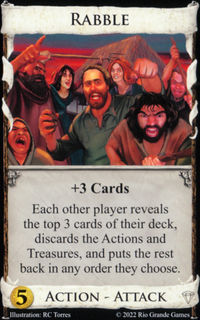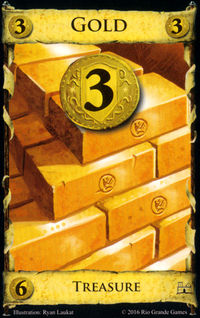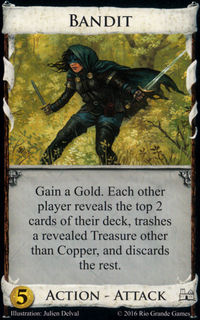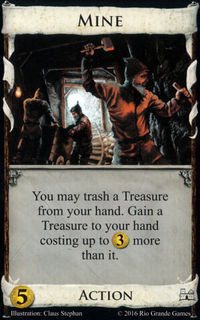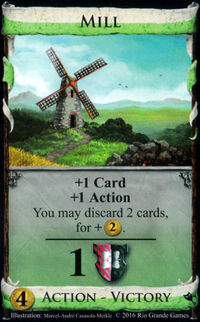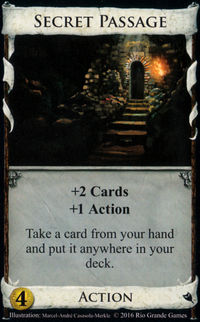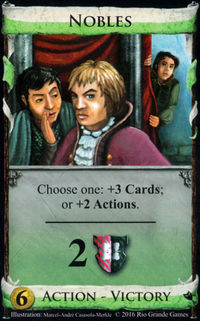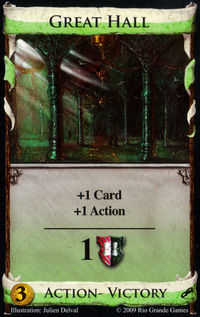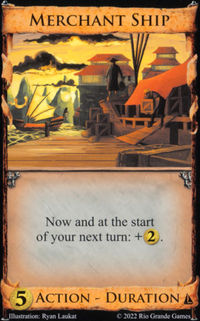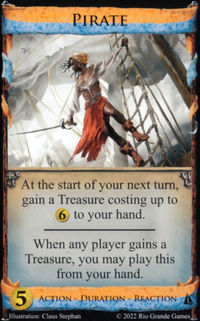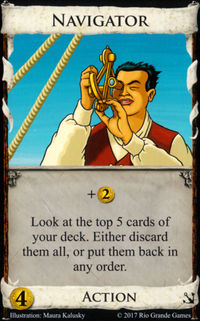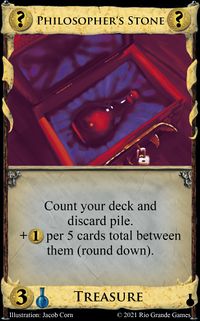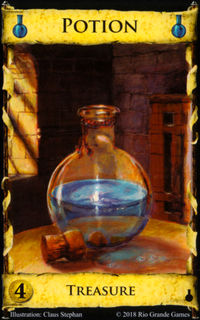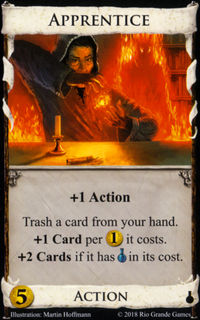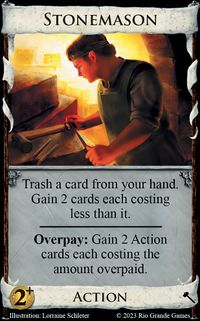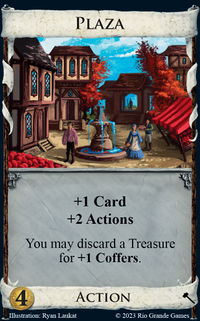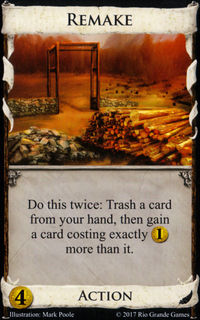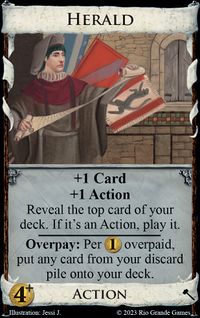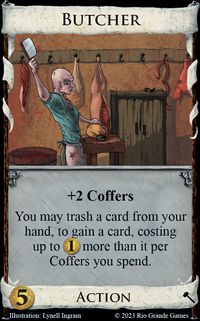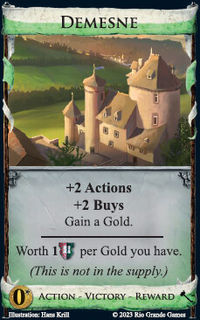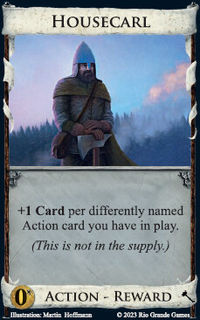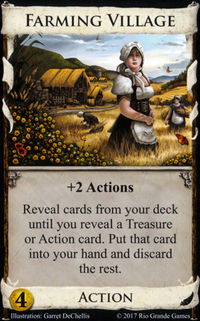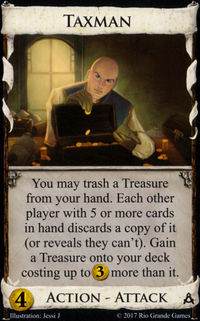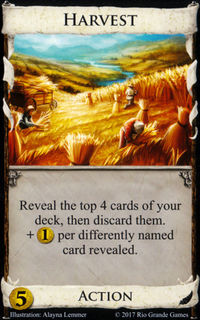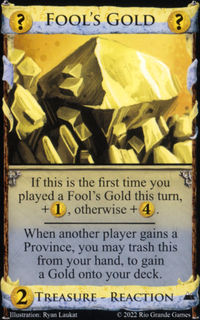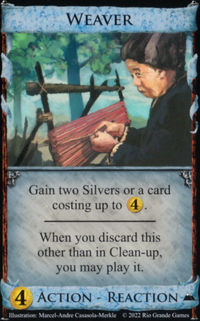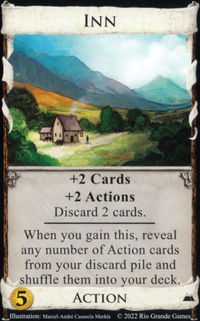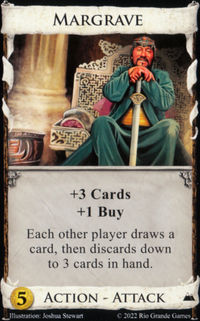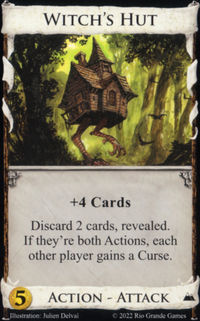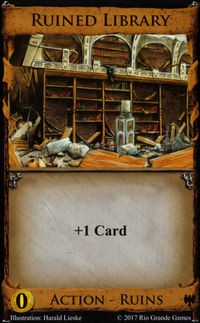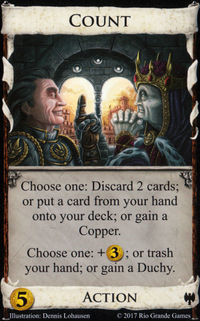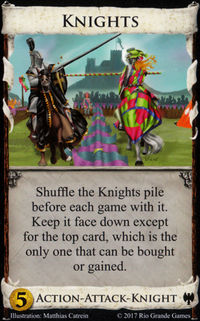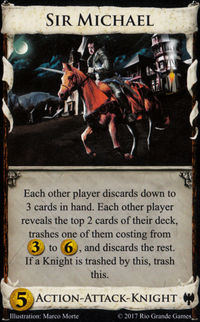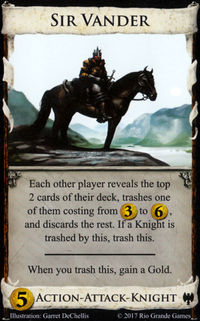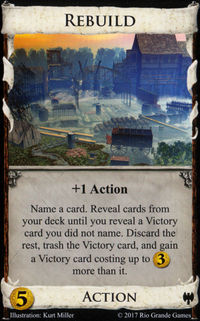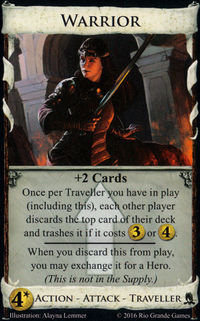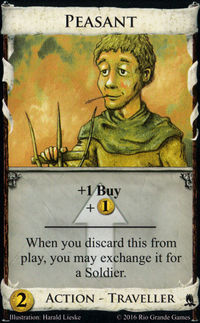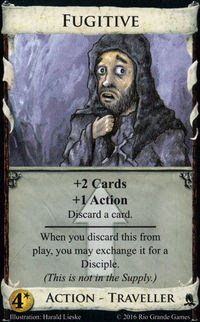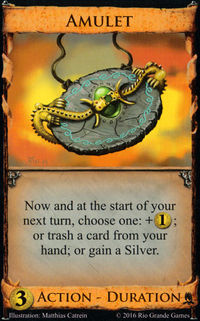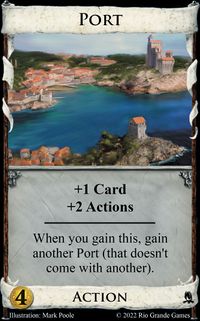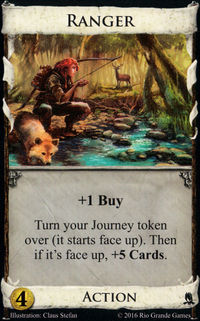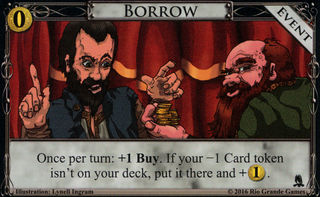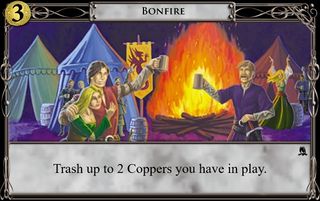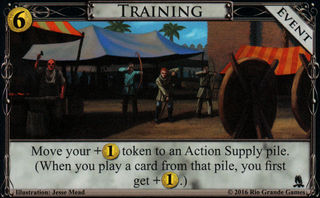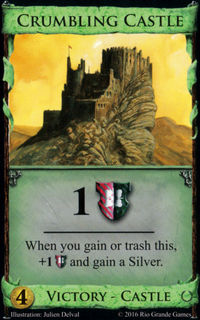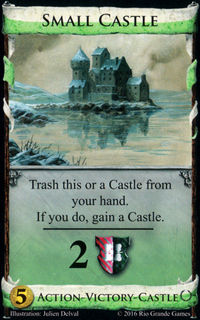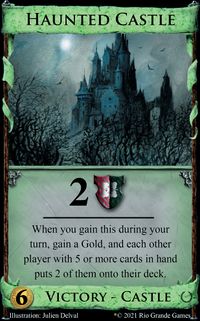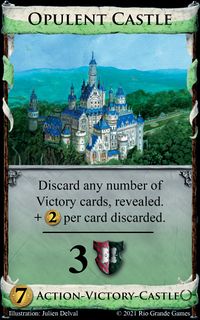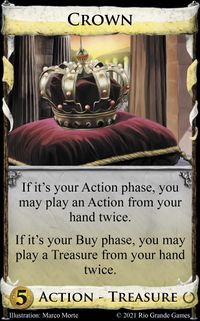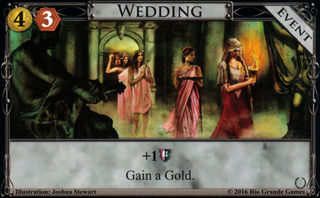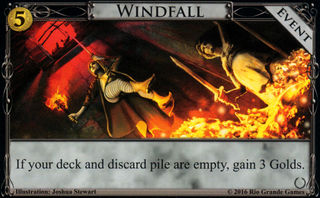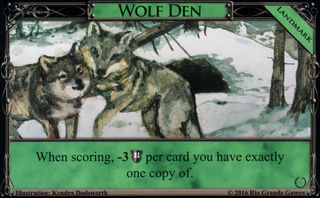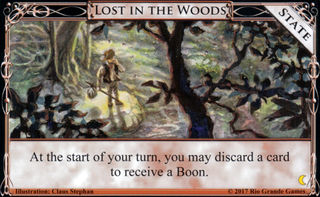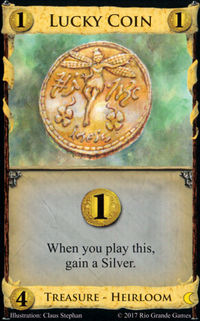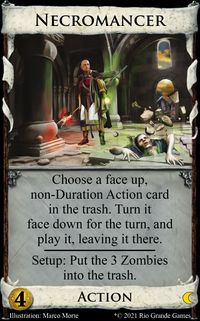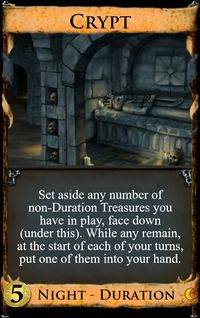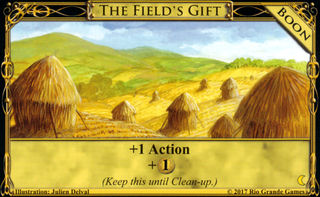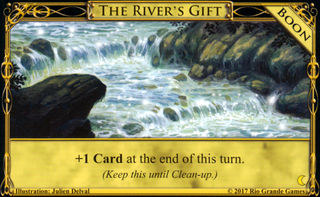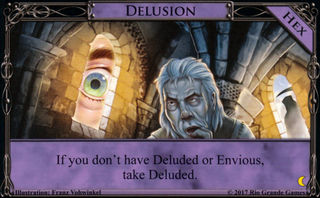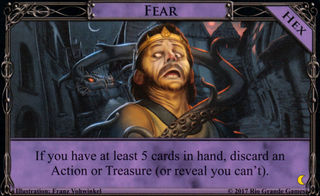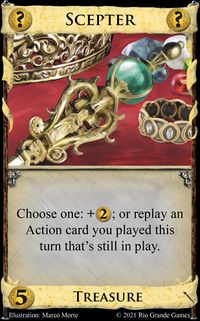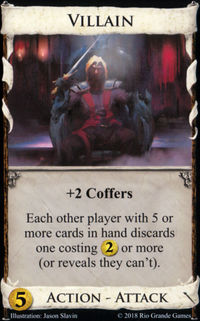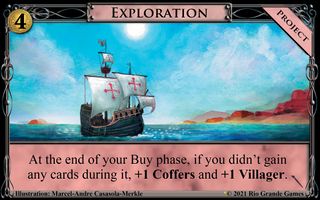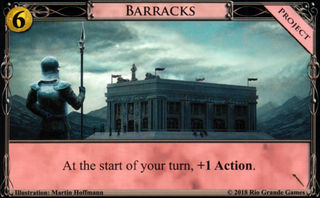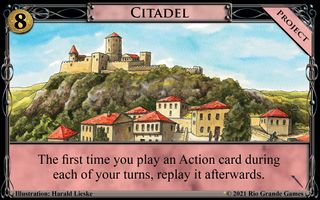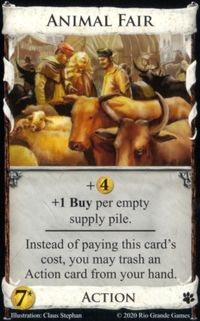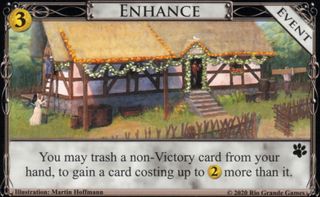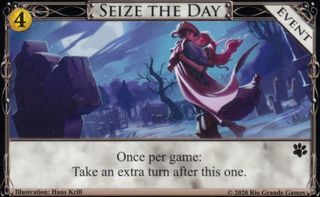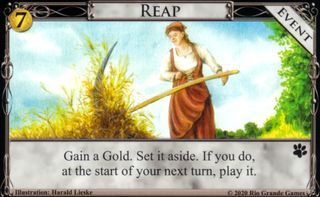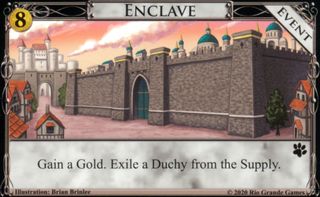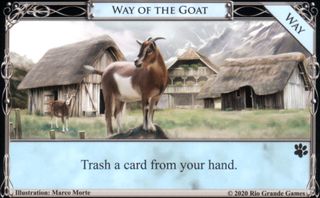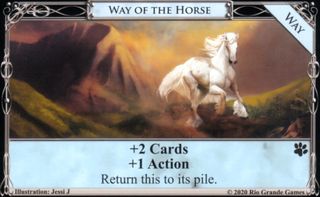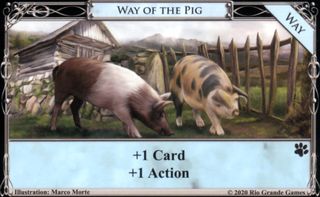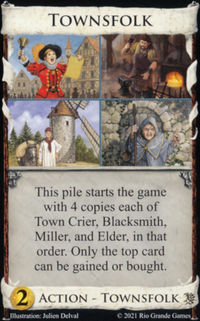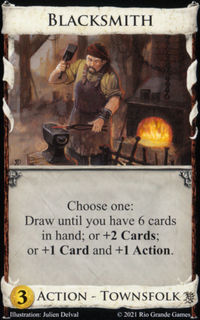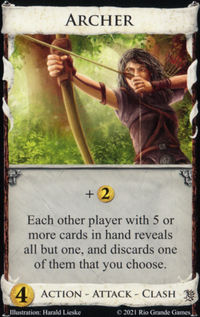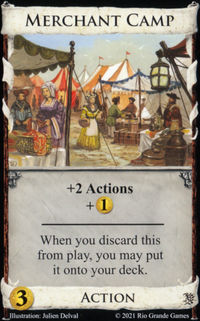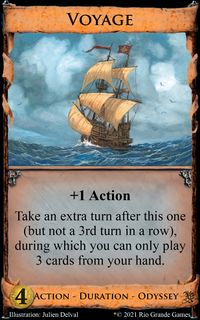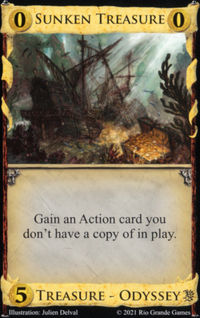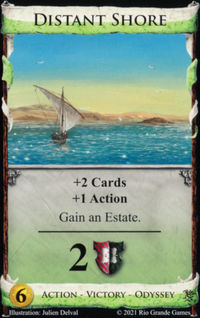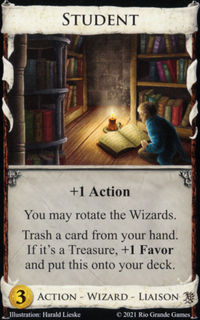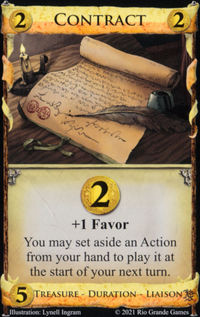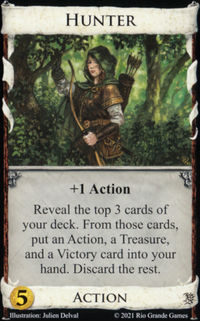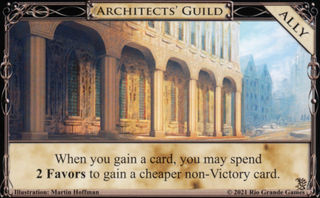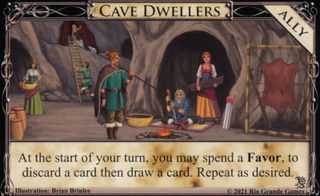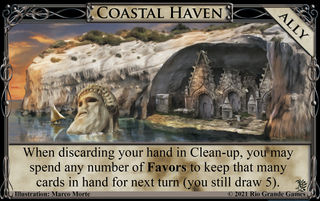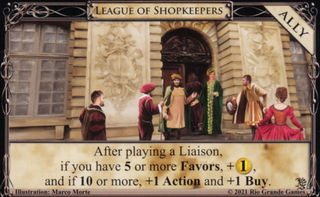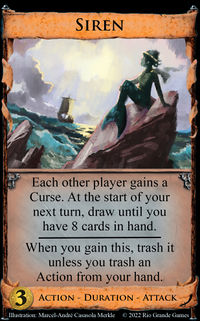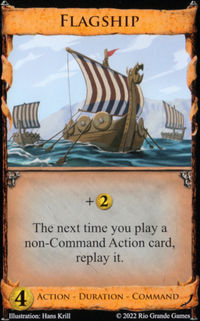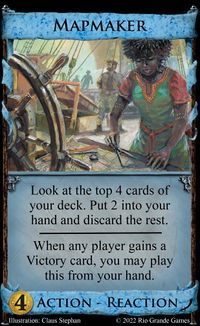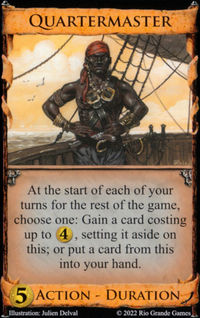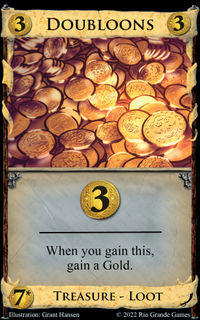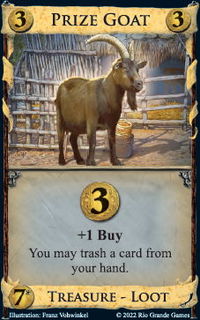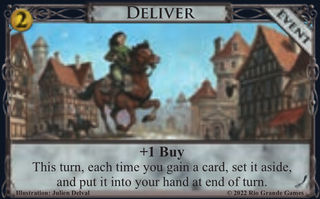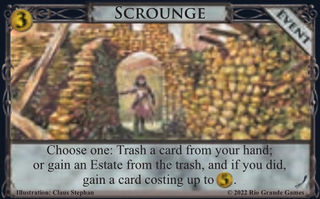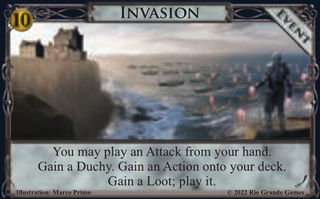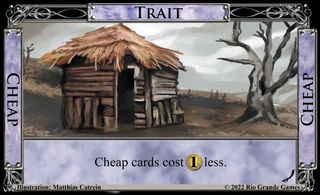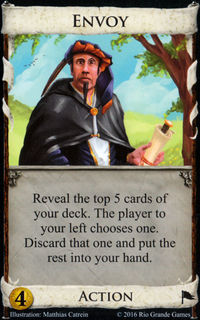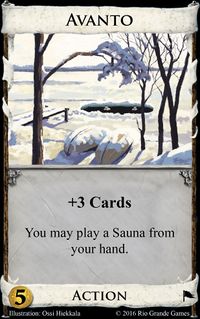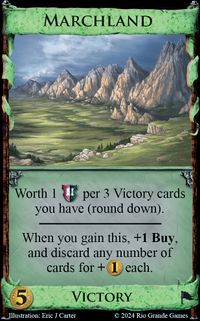King's Court
| King's Court | |
|---|---|
 | |
| Info | |
| Cost | |
| Type(s) | Action |
| Kingdom card? | Yes |
| Set |
Prosperity |
| Illustrator(s) | Dennis Lohausen |
| Card text | |
| You may play an Action card from your hand three times. | |
King's Court is an Action card from Prosperity. When played, it gives you the opportunity to play another Action card from your hand three times, like a better Throne Room. A few King's Courts can supercharge any engine and often enables huge game-ending turns. It is widely considered to be one of the strongest cards available in the game.
Contents |
FAQ
Official FAQ
- This is similar to Throne Room, but plays the Action three times rather than twice.
- Playing an Action card from your hand is optional.
- If you do play one, you resolve it completely, then play it a second time, then play it a third time.
- You cannot play other cards in-between (unless told to by the card, such as with King's Court itself).
- Playing Action cards with King's Court is just like playing Action cards normally, except it does not use up Action plays for the turn.
- For example if you start a turn by playing King's Court on Village, you would draw a card, get +2 Actions, draw another card, get +2 Actions again, draw a 3rd card, and get +2 Actions again, leaving you with 6 Actions.
- If you King's Court a King's Court, you may play an Action card three times, then may play another Action card three times, then may play a 3rd Action card three times; you do not play one Action card nine times.
Strategy
King’s Court is one of the strongest cards in the game, for a relatively simple reason: playing powerful cards once is impactful, double-playing as with other Throne Room variants is very strong, and triple-playing those same cards is even stronger. Even more so than other Throne Room variants, King’s Court functions as amplification of other cards and a very effective village.
King’s Court’s first strength is the efficiency of triple-playing: doing so allows you to have fewer copies of the triple-played card in your deck for the same effect, and lessens the need for draw. A notable example is a hand of two King’s Courts and three Bridges, which is effectively able to play Bridge nine times and thus easily enable you to buy all eight Provinces. An equivalent turn using Throne Room would need many draw cards, at least five Throne Rooms, and two more copies of Bridge to achieve the same outcome.
King’s Court's second strength is that it functions as a very strong village. It does this in the same way other Throne Room variants do, by allowing you to get multiple plays of other Action cards while spending only a single Action playing the King's Court itself. King's Court effectively nets you +2 Actions on top of any benefits from the Action card it plays. If you play King’s Court on a non-terminal Action such as a Lurker, you end up with net +2 Actions to continue your turn. Similarly, playing King’s Court on a terminal card such as Monument effectively allows you to play three terminals.
King’s Court’s third strength is that it can act as draw. This is possible because King's Court takes up less space in your hand than the cards it is replacing. For example, using King's Court on Laboratory draws six cards total, the same as playing three Laboratories, but the net effect is +4 to your hand size rather than +3 because it only uses up two cards from your hand rather than three. This draw effect is most notable when King’s Court is used with cantrips. Cantrips on their own are draw-neutral—no matter how many you play, your hand size will not increase. However, triple-playing a cantrip card such as Harbinger with King's Court does function as draw: this combination draws three cards, despite taking up only two spaces in hand, so the result is to increase your hand size by one. This effect clearly distinguishes King's Court from most other Throne Room variants, as using those to double-play a cantrip does not increase your hand size.
King’s Court’s fourth and greatest strength lies in the explosive nature of chains of this card. King’s Courting a King’s Court allows you to triple-play three cards, a dramatic increase compared to Throne Rooming a Throne Room, which only allows you to double-play two cards. This chaining additionally amplifies the draw and village effects that you would get from an unchained King’s Court play. Furthermore, for every additional King’s Court added to this chain you can triple-play another three cards, whereas for every Throne Room added you can only play another two cards. In this scaling comparison (3N-1 versus 2N-1, where N is the number of King’s Courts/Throne Rooms respectively in the chain) it’s easy to see how a chain of King’s Courts can easily triple-play every card in your deck. This often leads to situations where you have lots of excess King’s Court plays. In Kingdoms with gainers, it’s often possible to make use of these in powerful gain and play loops. As an example, with each tripled King’s Court in the chain you might use your three triple-plays to:
- play a King’s Court, continuing the chain;
- play a gainer such as Develop to get another King’s Court, a draw card, another copy of the gainer itself, and/or additional payload (in this case, likely to serve as fodder for Develop in the next iteration of the loop);
- play a draw card to draw everything just gained and begin the next loop iteration.
While fully self-perpetuating loops are uncommon and require setup, gainers generally synergize very well with King’s Court as they can provide the raw Actions to be triple-played, and often allow you to threaten a rapid pileout.
Given how expensive King’s Court is and how reliant it is on collision with desirable Action cards, it’s usually best to add King’s Court in the midgame, after some deck control has been established and you have good cards to triple-play. Later, adding King’s Courts is often the most cost-effective way of improving your deck, as adding one King’s Court is somewhat comparable to adding two more copies of another Action card you already have, or four more copies if you’re able to play it as part of a King’s Court chain.
Versions
English versions
| Digital | Text | Release | Date | |
|---|---|---|---|---|
 |
 |
You may choose an Action card in your hand. Play it three times. | Prosperity | October 2010 |
 |
 |
You may play an Action card from your hand three times. | Prosperity (2016 printing) | February 2017 |
Other language versions
Trivia
Preview
Secret History
Should this cost debt?






